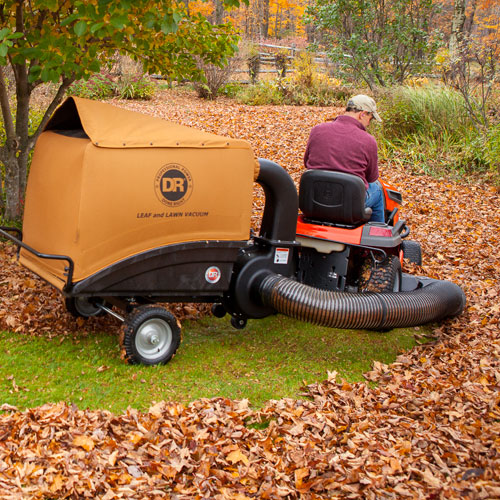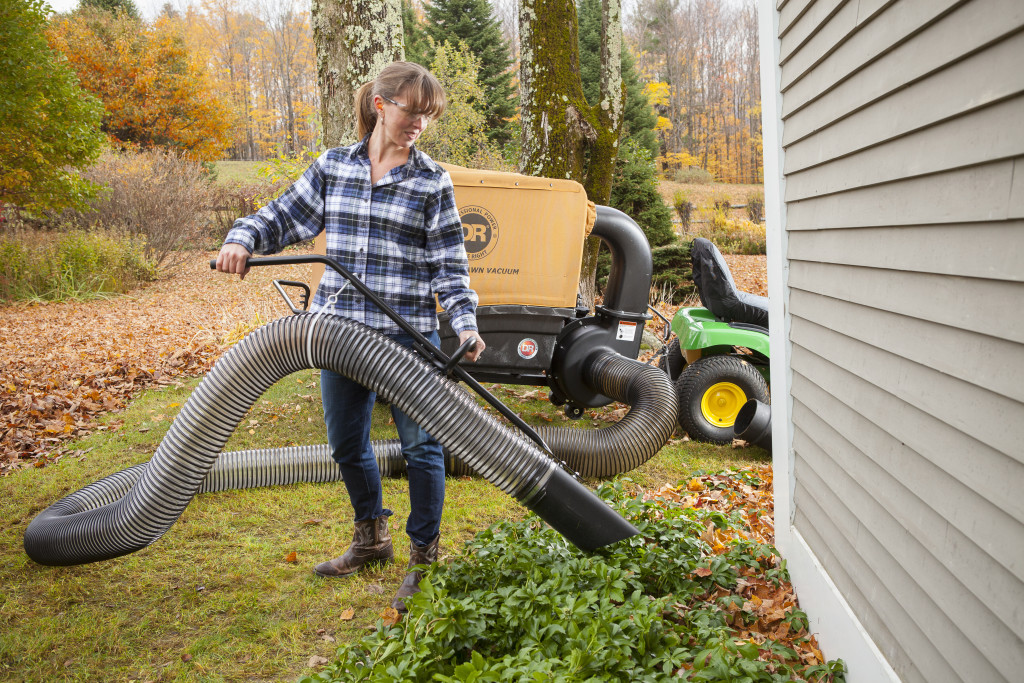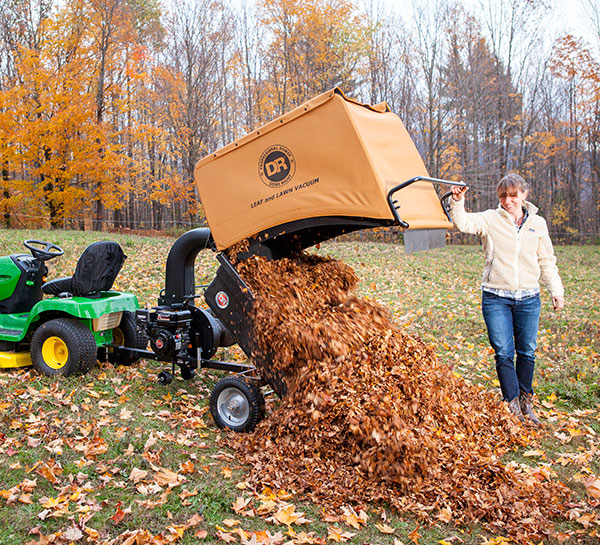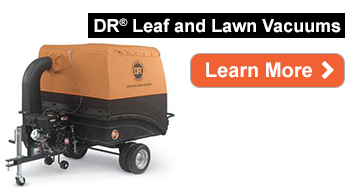
1. Wait for dry conditions.
However you clean up your lawn – with a lawn vacuum, rake, or other method – the whole process will be easier and faster if you wait for dry conditions. Moisture makes debris stick together in heavy clumps, making your job harder than it needs to be.
2. Clear large debris first.
If you’re using a DR Leaf and Lawn Vac for cleaning your lawn, you’ll want to clear away anything that’s too large for it to pick up. While pine cones, gum tree balls, nuts, and small sticks will be picked up without a problem, large branches should be cleared away beforehand.


If you’re raking, be sure to get right up close to trees, shrubs, hedges, and fully clean out flower beds. If using a leaf vac, we recommend the Vacuum Hose, which attaches easily to your machine and allows you to vacuum hard-to-reach spots. Debris left in flowerbeds and around shrubs can stunt growth and foster disease.
4. Tidy hard surfaces.
Walkways, driveways, trails, and other non-lawn surfaces need some spring cleaning, too! Vacuum debris from walkways and trails and rake displaced gravel back on to driveways and roads.
5. Don’t forget window wells!
While you’re vacuuming the lawn, clean out window wells and other nooks and crannies around the house. The result will be better-looking and you won’t worry about mold or other disease festering so close to your foundation.
6. Get rid of thatch build-up.
Thatch is dead grass blades and other small weeds that collect on top of the soil, at the base of the living grass blades. If the build-up gets thick enough, it can choke your lawn by restricting the flow or air and water to the soil. Spring is a perfect time to remove thatch for the summer growing season. Depending on how much thatch build-up you have, a leaf vacuum may be all you need to clear it. For particularly thick build-up, a rake or dethatcher may be required.
7. Clear snow mold.

Snow mold often appears on your lawn after the winter if leaves or other debris is left on the grass before winter hits. Usually it looks like dry, brown patches of matted dead grass, and may have a pinkish hue. The best way to get rid of it is to gently loosen it with a rake, then vacuum up the dead debris with your lawn vac.
8. Compost it!
After you’ve finished cleaning the lawn, compost the waste material! Once it’s broken down, it will be a great way to improve your soil structure and return vital nutrients to your garden. For larger waste, consider shredding it to a fine mulch with a chipper/shredder. Luckily, if you’ve used the DR Leaf and Lawn Vac, your leftovers will already be shredded to an easy-to-decompose mulch.
